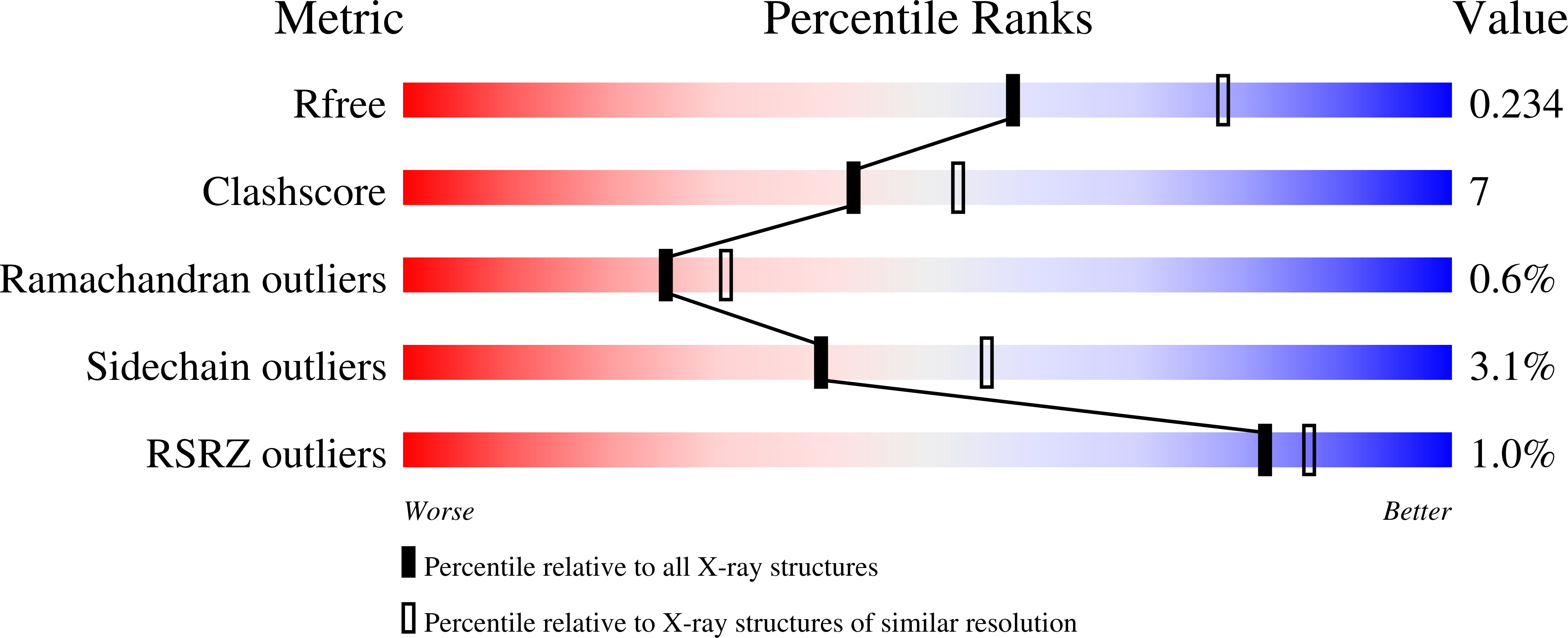Crystallographic and kinetic evidence of a collision complex formed during halide import in haloalkane dehalogenase.
Pikkemaat, M.G., Ridder, I.S., Rozeboom, H.J., Kalk, K.H., Dijkstra, B.W., Janssen, D.B.(1999) Biochemistry 38: 12052-12061
- PubMed: 10508409
- DOI: https://doi.org/10.1021/bi990849w
- Primary Citation of Related Structures:
1CIJ - PubMed Abstract:
Haloalkane dehalogenase (DhlA) converts haloalkanes to their corresponding alcohols and halide ions. The rate-limiting step in the reaction of DhlA is the release of the halide ion. The kinetics of halide release have been analyzed by measuring halide binding with stopped-flow fluorescence experiments. At high halide concentrations, halide import occurs predominantly via the rapid formation of a weak initial collision complex, followed by transport of the ion to the active site. To obtain more insight in this collision complex, we determined the X-ray structure of DhlA in the presence of bromide and investigated the kinetics of mutants that were constructed on the basis of this structure. The X-ray structure revealed one bromide ion firmly bound in the active site and two bromide ions weakly bound on the surface of the enzyme. One of the weakly bound ions is close to Thr197 and Phe294, near the entrance of the earlier proposed tunnel for substrate import. Kinetic analysis of bromide import by the Thr197Ala and Phe294Ala mutants of DhlA at high halide concentration showed that the rate constants for halide binding no longer displayed a wild-type-like parabolic increase with increasing bromide concentrations. This is in agreement with an elimination or a decrease in affinity of the surface-located halide-binding site. Likewise, chloride binding kinetics of the mutants indicated significant differences with wild-type enzyme. The results indicate that Thr197 and Phe294 are involved in the formation of an initial collision complex for halide import in DhlA and provide experimental evidence for the role of the tunnel in substrate and product transport.
Organizational Affiliation:
Laboratory of Biochemistry, BIOSON Research Institute, Groningen Biomolecular Sciences and Biotechnology Institute, University of Groningen, The Netherlands.















